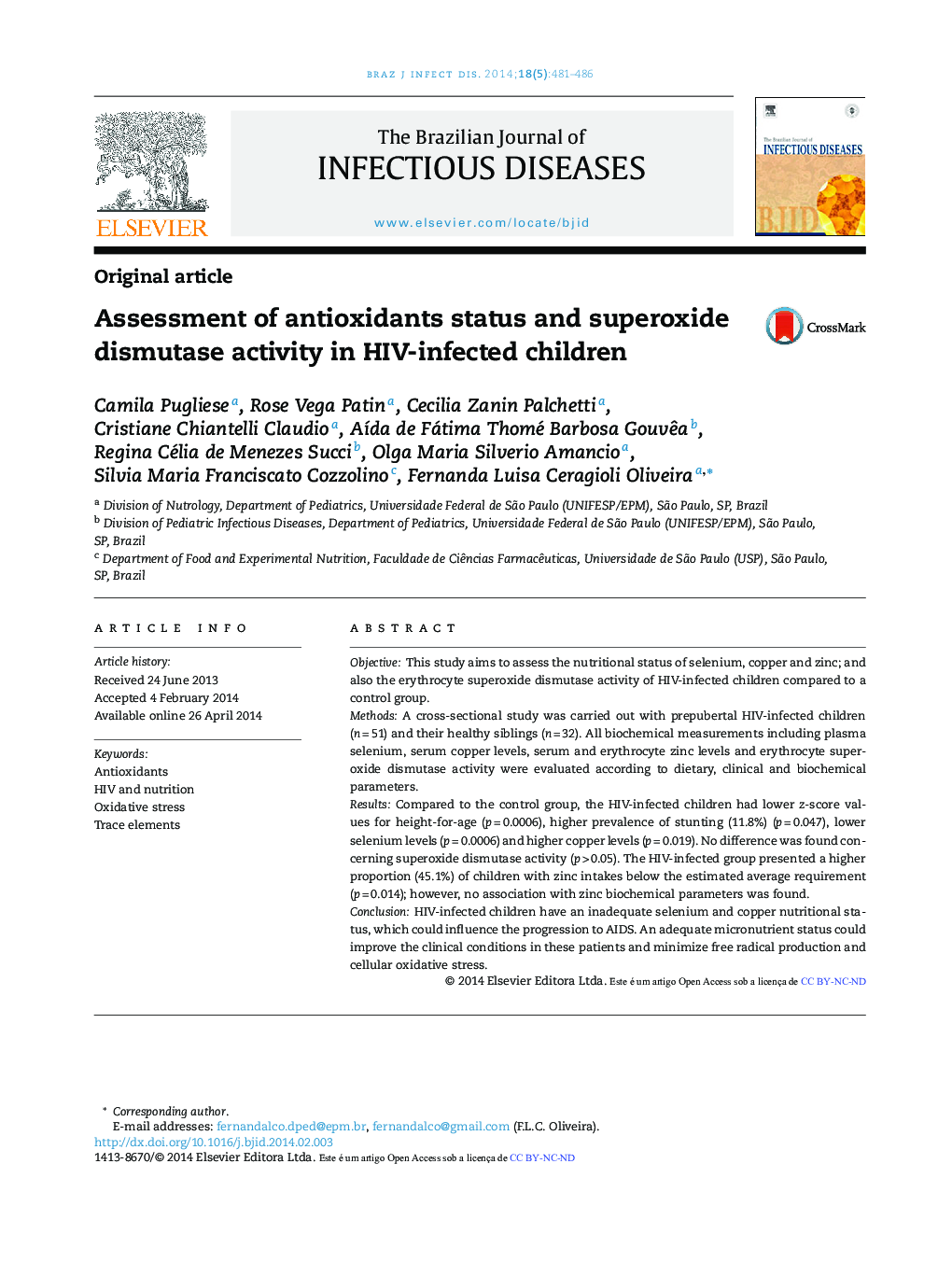| Article ID | Journal | Published Year | Pages | File Type |
|---|---|---|---|---|
| 3343947 | The Brazilian Journal of Infectious Diseases | 2014 | 6 Pages |
ObjectiveThis study aims to assess the nutritional status of selenium, copper and zinc; and also the erythrocyte superoxide dismutase activity of HIV-infected children compared to a control group.MethodsA cross-sectional study was carried out with prepubertal HIV-infected children (n = 51) and their healthy siblings (n = 32). All biochemical measurements including plasma selenium, serum copper levels, serum and erythrocyte zinc levels and erythrocyte superoxide dismutase activity were evaluated according to dietary, clinical and biochemical parameters.ResultsCompared to the control group, the HIV-infected children had lower z-score values for height-for-age (p = 0.0006), higher prevalence of stunting (11.8%) (p = 0.047), lower selenium levels (p = 0.0006) and higher copper levels (p = 0.019). No difference was found concerning superoxide dismutase activity (p > 0.05). The HIV-infected group presented a higher proportion (45.1%) of children with zinc intakes below the estimated average requirement (p = 0.014); however, no association with zinc biochemical parameters was found.ConclusionHIV-infected children have an inadequate selenium and copper nutritional status, which could influence the progression to AIDS. An adequate micronutrient status could improve the clinical conditions in these patients and minimize free radical production and cellular oxidative stress.
